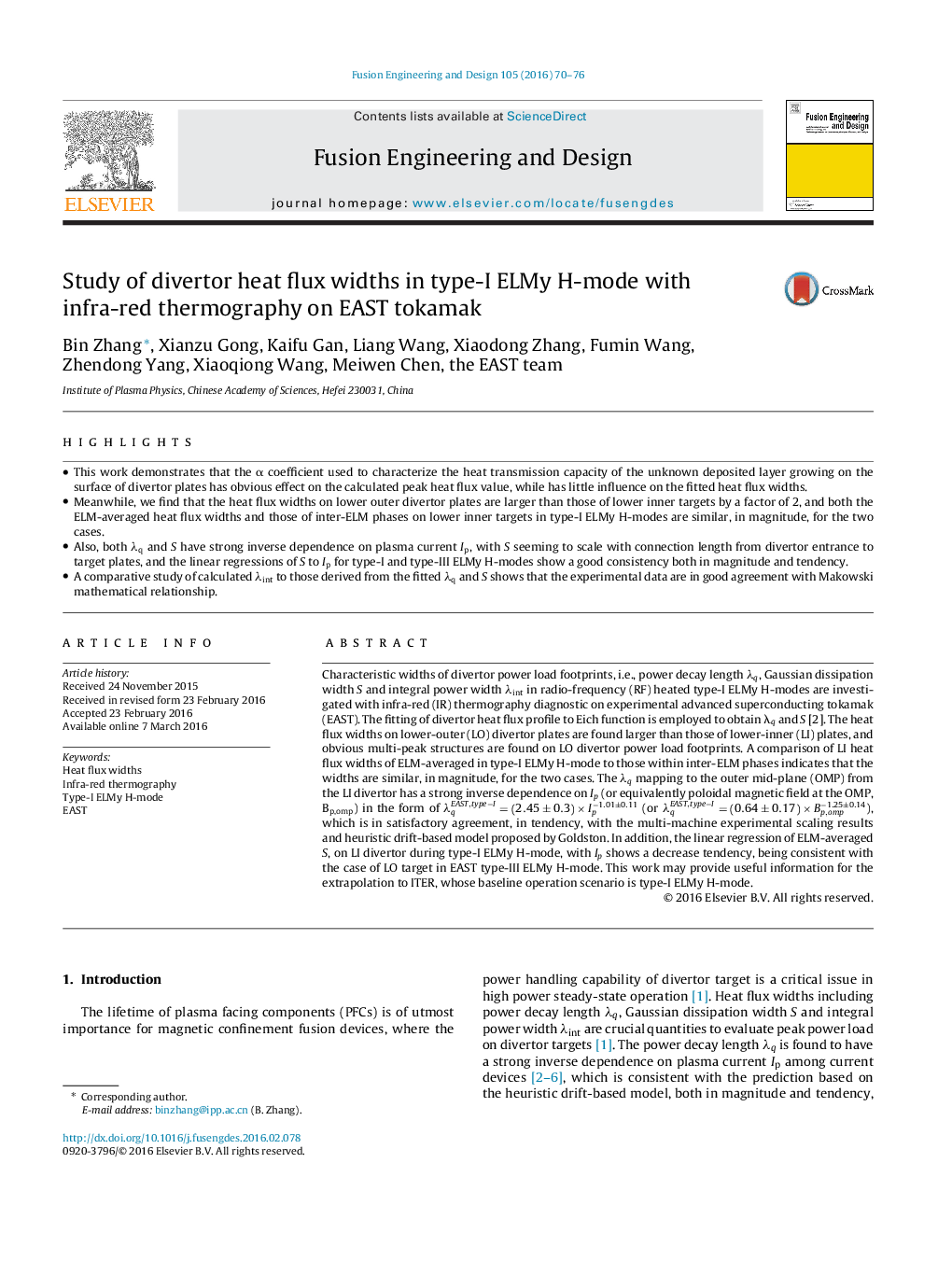| Article ID | Journal | Published Year | Pages | File Type |
|---|---|---|---|---|
| 270911 | Fusion Engineering and Design | 2016 | 7 Pages |
•This work demonstrates that the α coefficient used to characterize the heat transmission capacity of the unknown deposited layer growing on the surface of divertor plates has obvious effect on the calculated peak heat flux value, while has little influence on the fitted heat flux widths.•Meanwhile, we find that the heat flux widths on lower outer divertor plates are larger than those of lower inner targets by a factor of 2, and both the ELM-averaged heat flux widths and those of inter-ELM phases on lower inner targets in type-I ELMy H-modes are similar, in magnitude, for the two cases.•Also, both λq and S have strong inverse dependence on plasma current Ip, with S seeming to scale with connection length from divertor entrance to target plates, and the linear regressions of S to Ip for type-I and type-III ELMy H-modes show a good consistency both in magnitude and tendency.•A comparative study of calculated λint to those derived from the fitted λq and S shows that the experimental data are in good agreement with Makowski mathematical relationship.
Characteristic widths of divertor power load footprints, i.e., power decay length λq, Gaussian dissipation width S and integral power width λint in radio-frequency (RF) heated type-I ELMy H-modes are investigated with infra-red (IR) thermography diagnostic on experimental advanced superconducting tokamak (EAST). The fitting of divertor heat flux profile to Eich function is employed to obtain λq and S [2]. The heat flux widths on lower-outer (LO) divertor plates are found larger than those of lower-inner (LI) plates, and obvious multi-peak structures are found on LO divertor power load footprints. A comparison of LI heat flux widths of ELM-averaged in type-I ELMy H-mode to those within inter-ELM phases indicates that the widths are similar, in magnitude, for the two cases. The λq mapping to the outer mid-plane (OMP) from the LI divertor has a strong inverse dependence on Ip (or equivalently poloidal magnetic field at the OMP, Bp,omp) in the form of λqEAST,type−I=(2.45±0.3)×Ip−1.01±0.11 (or λqEAST,type−I=(0.64±0.17)×Bp,omp−1.25±0.14), which is in satisfactory agreement, in tendency, with the multi-machine experimental scaling results and heuristic drift-based model proposed by Goldston. In addition, the linear regression of ELM-averaged S, on LI divertor during type-I ELMy H-mode, with Ip shows a decrease tendency, being consistent with the case of LO target in EAST type-III ELMy H-mode. This work may provide useful information for the extrapolation to ITER, whose baseline operation scenario is type-I ELMy H-mode.
